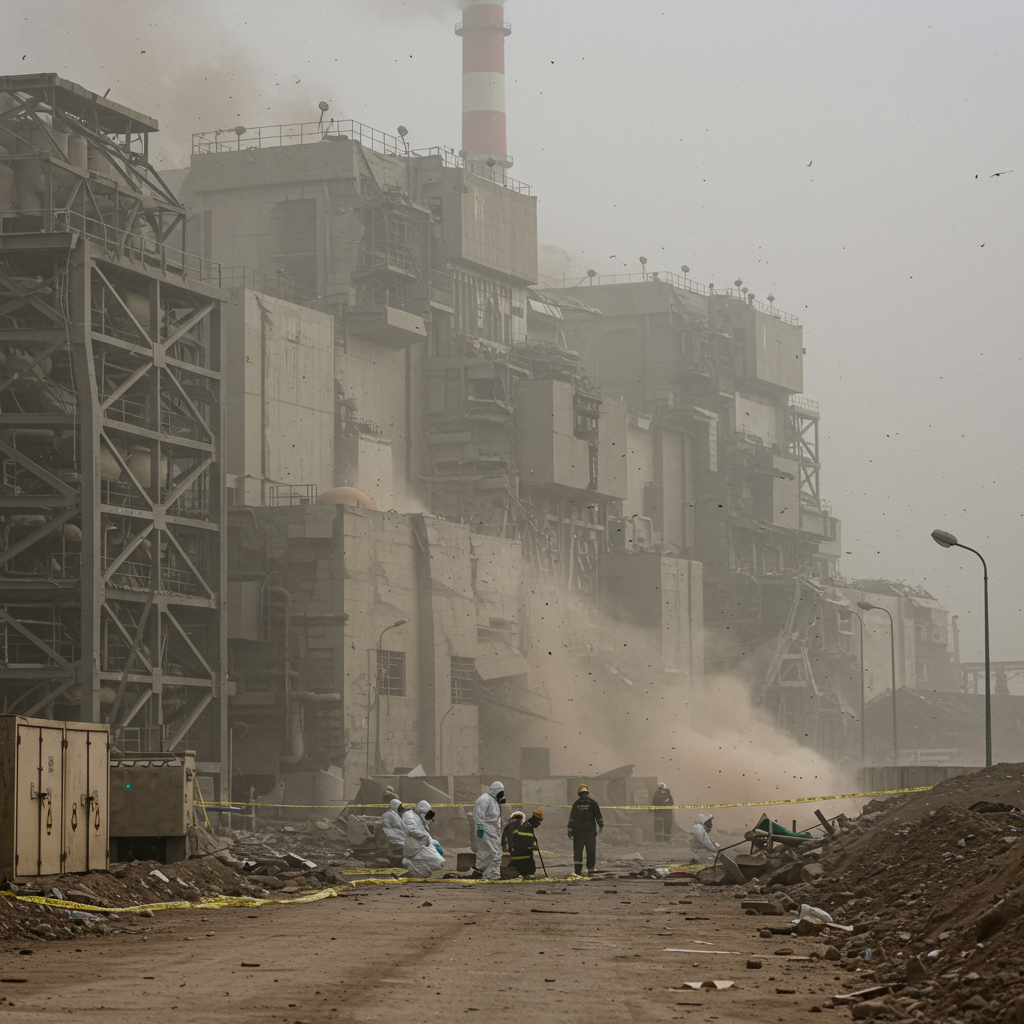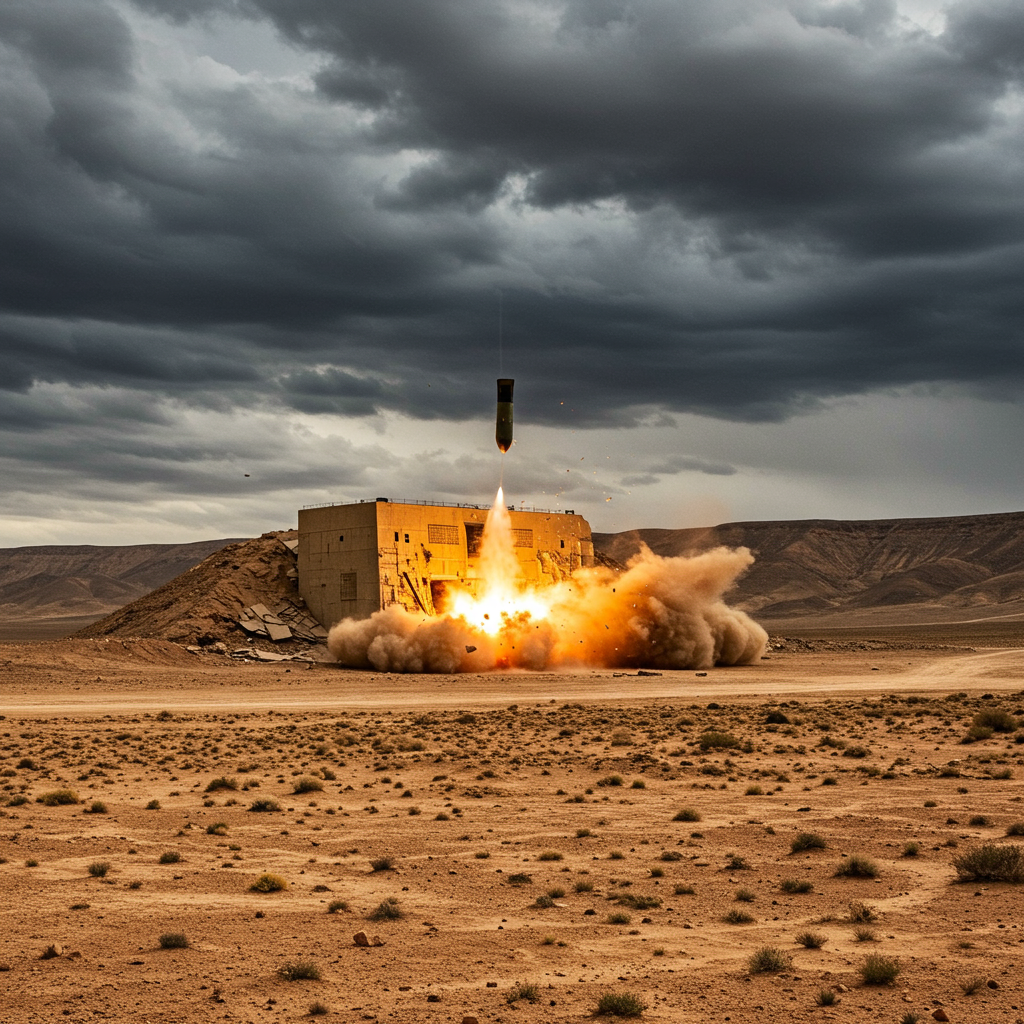Following heightened tensions and military pressure, US President Donald Trump has announced a two-week period before making a decision on potential military action against Iran. This declaration has been cautiously welcomed by European negotiators, who see it as vital “breathing space” and a potentially fruitful “diplomatic window” to coax Iran back to the negotiation table regarding its contentious nuclear program.
Key Diplomatic Channels Emerge
Against a backdrop of recent intensive Israeli airstrikes that have reportedly degraded significant portions of Iran’s nuclear infrastructure, diplomatic efforts are gaining unexpected momentum. Crucially, multiple channels appear to be opening simultaneously.
While European powers planned to meet with Iranian officials in Geneva, Switzerland, even before Trump’s announcement, the significance of these talks has dramatically increased. The meeting, involving the EU’s foreign policy chief and foreign ministers from Britain, France, and Germany alongside their Iranian counterpart, is now viewed as a critical step, potentially acting as a bridge between Tehran and Washington. European diplomats indicate “ideas” will be presented to explore “room for maneuver” and identify possible compromises, particularly on the central issue of uranium enrichment.
Adding another layer to the diplomatic landscape, reports indicate that the United States and Iran have engaged in direct negotiations in Oman. These discussions, reportedly involving US Mideast envoy Steve Witkoff and Iranian Foreign Minister Abbas Araghchi, were held on the outskirts of Muscat. While initial characterizations of the talks varied (some calling them “indirect”), US officials described them as “direct” and “positive.” These negotiations represent a rare direct interaction between the two nations amidst decades of animosity and are slated to continue.
The Thorny Issue of Uranium Enrichment
At the heart of any potential agreement lies Iran’s uranium enrichment program. Tehran insists its program is solely for peaceful purposes, yet it has amassed large quantities of uranium enriched to high levels, including material near weapons-grade – a violation of its non-proliferation commitments.
The core sticking point remains the disparity between Iran’s desire to retain enrichment capabilities (potentially seeking permission to enrich up to 20%) and the Trump administration’s long-held position demanding the complete prohibition of all nuclear material enrichment. The US stance has reportedly centered on the “dismantlement” of key aspects of Iran’s program, drawing a clear “red line” at weaponization, though acknowledging potential for “compromise at the margin.”
Under the 2015 nuclear deal (JCPOA), which the US withdrew from in 2018, Iran’s enrichment was capped at a low 3.67%. Since the US withdrawal, Iran has significantly expanded its activities, with current stockpiles capable of potentially yielding multiple nuclear weapons, and material enriched to 60% purity – a short technical step from weapons grade. Iran has consistently refused to abandon its program entirely, dismissing proposals akin to the “Libyan solution” (complete dismantling) as unworkable and against its national interests.
Iran’s Precarious Position and Shifting Geopolitics
Iran enters these negotiations from a complex and potentially weakened position. Beyond the military pressure from recent strikes, there are signs of increasing geopolitical isolation. While Iran aims to use diplomacy to safeguard national interests, address the nuclear issue, and crucially, secure the lifting of debilitating sanctions, deep mistrust of the United States, particularly the Trump administration, remains a significant hurdle. Tehran views past US actions, such as the JCPOA withdrawal and the killing of Qassem Soleimani, as evidence that the US cannot be trusted. Reports of an alleged letter from Trump to Supreme Leader Khamenei proposing a deal requiring Iran to abandon its nuclear program and regional proxies in exchange for sanctions relief have reportedly been viewed in Tehran not as a negotiation offer, but as a demand for “capitulation.”
Adding to Tehran’s concerns is the possibility of losing key allies, particularly Russia. There are growing suggestions that Moscow might be pivoting towards a rapprochement with Donald Trump. This shift poses a significant threat to Iran, which has relied on Russian backing. Analysts suggest Russia benefits from Iran acting as a regional “bogeyman,” allowing Moscow to position itself as a mediator. Furthermore, Russia’s economy may benefit from preventing Iranian energy exports from depressing global prices. This perspective casts Iran as a potentially “disposable pawn” in Russia’s larger strategic game of weakening NATO and cultivating a more “pliant America.”
Without Moscow’s steadfast support, Tehran faces daunting choices both internationally and domestically. The leadership appears less confident, internal reformist efforts seem stalled, and a restless youth population harbors significant resentment. Rejecting talks with the US could leave key nuclear facilities like Natanz and Fordow vulnerable to further military strikes.
Uncertainty Lingers
Despite the opening of diplomatic channels and the temporary “breathing space,” significant uncertainty persists. The fear that the talks could still collapse is palpable among diplomats. Doubts remain whether Trump’s two-week window is a genuine opportunity for negotiation or simply a tactic to buy time while preparing for potential military action – a “big gamble” that could destabilize the entire region. The unpredictable nature of the US President adds another layer of complexity, making it challenging to interpret signals or predict outcomes.
Ultimately, while military pressure may be forcing Iran to reconsider its options, the fundamental disagreements over enrichment, the demand for sanctions relief, deep-seated mistrust, and shifting international alliances present formidable challenges to achieving a lasting diplomatic resolution within this crucial two-week window.



